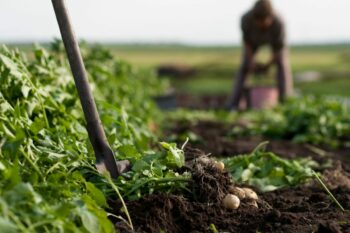From Hardscrabble Farmer
Llpoh should have picked a better example of the success of industrialization than agriculture. If eating was simply a matter of producing the highest number of calories from a specific plot of land with the lowest investment of labor regardless of the amount of energy expended to do so, he’d be right. The problem with our current system of agriculture should be obvious to anyone with two eyeballs and heartbeat, but for some reason only the smallest minority of people are able to see the holistic panorama of industrialized agriculture and it’s downstream effects on the population.
Let’s examine some of the issues in greater detail before we decide what makes something successful as opposed to efficient.
Food is more than calories. I’m not a nutritionist or an MD, but I do know that calories are simply a mechanism for delivering energy to an organism, not a measure of nutritive value. If a toddler needed 500 calories a day and was offered a choice between a 500 calorie soft drink or an equal amount of vegetables, meat and fruit, only a sadist would feed the child the soft drink as a steady diet based on cost alone. `A single handful of fresh greens picked right out of the garden brings greater value to the life of a human being than a 2 liter Mountain Dew with ten times the calories.
Humans need better nutrition to live healthier and longer lives. Today we have calories produced by industrialized agriculture with little nutritive value that leave people to live miserable lives filled with preventable illnesses and multiple disabilities directly related to poor diet. The associated costs to re-mediate these problems using pharmaceuticals and overtaxing the healthcare system are never factored in, nor is the cost of lost labor directly related to these failings.
Continue reading “INDUSTRIALIZED AGRICULTURE – BIGGEST MISTAKE OF 20TH CENTURY”





